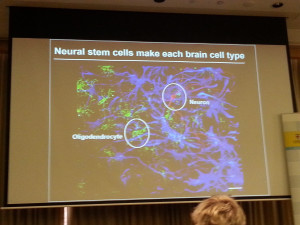The first day of CONASTA provided a variety of talks and workshops across a broad range of topics. The opening keynote address was given by burns treatment pioneer, former Australian of the Year and ‘National Living Treasure’, Professor Fiona Wood. With a combination of insights into the application of science to improve clinical management of burns, personal reflection and humorous anecdotes, Prof. Wood eloquently explained how her education had provided the opportunities to pursue her passion to make a difference – to individual patients and the wider community. She highlighted the importance of teachers for inspiring students to take an interest in Science and fulfil the potential of those who would become the scientists of the future.
She spoke passionately about simple measures to limit the damage of a burn; cooling via running water for 20 minutes within first hour of the scald. She also described how neurological impaiments may be improved, by literally mirroring the actions of the good hand upon the damaged hand, or using virtual avatars to model improvements in locomotor skills via the Wii. She also mused about a potential future where technology and basic science advances may radically improve the prognosis, surgery and clinical management of burns. She concluded with a statement encapsulating the importance of stimulating student interest and capacity to undertake science for the innovations of the future: “STEM with unfettered imagination – blinkers off – for the good of us all.”
The second keynote I attended was a fascinating exploration of the discovery and functions of neural stem cells, presented by Dr. Kaylene Young. For decades it was assumed that neurons were essentially long-lived, non-renewing cells. A discovery by Australian scientist Perry Barlett in the 90s demonstrated the presence of neural stem cells able to renew populations of neurons and other important cell types of the central nervous system.

In fact, the production of new neurons from stem cells is an important component of forming new memory, exemplified by musicians and taxi drivers (before the age of the GPS). Also important are the oligodendrocytes, the cells that make the insulating myelin which surrounds neuronal processes and is critical for rapid nerve impulses; newly produced oligodendrocytes are important in repair following stroke or during remission of multiple sclerosis. By understanding the molecular messages involved in controlling the replication and maturation of stem cells to neurons and oligodendrocytes, Dr. Young hopes to make future improvements in brain repair. She concluded with a program designed to inspire the next generation of neuroscientists by bringing students into the lab: the Australian Brain Bee Challenge.
